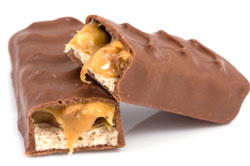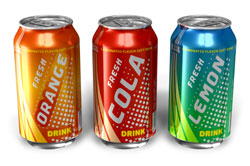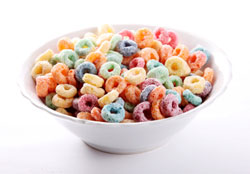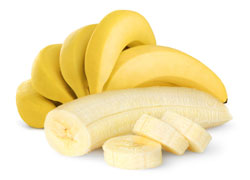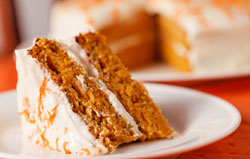Berikut adalah berita dari Medicalnewstoday yang saya petik untuk anda semua. Kita semua memerlukan gula untuk hidup. Tanpa gula sel-sel di dalam tubuh kita akan mati tetapi berlebihan gula memberi risiko yang lain pula. Risiko yang dimaksudkan ialah kerosakan gigi, obesiti dan type2 diabetes.
Pakar pemakanan di Amerika mengesyorkan jangan ambil gula lebih dari 13 camca sehari. Artikel ini juga memberi kiraan kandungan gula dalam 100 gm coklat, minuman dalam tin, bijirin, buah-buahan atau pencuci mulut (dessert). Coklat mempunyai kandungan gula yang tinggi. Contoh 44 gm chocolate bar kandungan gula persamaan dengan 5.75 camca gula. Rupa-rupanya coklat, minuman dalam tin, buah-buahan dan dessert mempunyai kandungan gula yang tinggi. Berwaspadalah anda semua.
Selamat meneruskan pembacaan anda...........
With people living ever more frantic and fast-paced lives, we can often lose track of which essential and non-essential nutrients we consume. Sugar is vital for good health, without it all the cells in our body would come to a halt and perish. However, too much sugar raises the risk of several diseases and conditions, including rotting teeth,
obesity and type 2
diabetes.
These days we're all being warned to cut down on our sugar consumption. But, sometimes we can be unaware of just how much sugar is in the food that we are eating.
To help you, we have listed some common everyday foods and drinks, together with their sugar content..
What is sugar?
Sugar is a simple
carbohydrate that belongs to a class of chemically-related sweet-flavored substances. It comes in many different forms. The three main types of sugar are sucrose, lactose, and fructose.Even though our cells need sugar (glucose) to survive, consuming too much of it can cause numerous different health problems. Added sugar contains no beneficial nutrients and in excess only contributes to tooth decay, diabetes, and obesity.
Being aware of the existing and added sugar contents of the foods and drinks we consume is vital for our health - even more so today because so many products have sugar added to them.
The AHA currently recommends that men consume no more than 150 calories from added sugar per day, and women 100 calories.
Nutritionists strongly recommend against consuming more than 13 teaspoons a day.
Sugar content in common foods and drinks
To help you keep track of how much sugar you're consuming we've listed some common everyday foods and drinks, together with their sugar content. Some of these may surprise you:
How much sugar do chocolates and candy contain?
With high sugar content, chocolate should always be viewed as an occasional treat.
- Milk chocolate bar (44g) - 5.75 teaspoons of sugar
- Snickers bar (57g) - 7 teaspoons of sugar
- Milky Way bar (58g) - 8.5 teaspoons of sugar
- Marshmallows (100g) - 14.5 teaspoons of sugar
- Caramel piece (10g) - 1.7 teaspoons of sugar
- Butterfinger bar (60g) - 6.9 teaspoons of sugar
- Dove chocolate bar (37g) - 5 teaspoons of sugar
- Starburst packet (45 grams) - 5.5 teaspoons of sugar
- Twix bar - 2.75 teaspoons of sugar
- M&Ms packet (45 grams) - 5.75 teaspoons of sugar
- Boiled sweets bag (100 grams) - 11.5 teaspoons of sugar
How much sugar do soft drinks contain?
Soft drinks often contain a high amount of sugar.
- Coca cola (one can) - 7 teaspoons of sugar
- Red Bull (one can) - 7.5 teaspoons of sugar
- Lemonade (one glass) - 5.5 teaspoons of sugar
- Orange squash (one glass) - 2.5 teaspoons of sugar
- Hot chocolate (one mug) - 4.5 teaspoons of sugar
- Fruit smoothie (one glass) - 3.5 teaspoons of sugar
How much sugar do breakfast cereals contain?
*(per 100 grams)
Froot Loops are said to contain 106 times more sugar than Shredded Wheat.
- Alpen - 5 teaspoons of sugar
- Cheerios - 1.1 teaspoons of sugar
- Corn Flakes - 2.4 teaspoons of sugar
- Cocoa Krispies - 9.6 teaspoons of sugar
- Froot Loops - 10.6 teaspoons of sugar
- Raisin Bran - 7.8 teaspoons of sugar
- Frosted Flakes - 8.9 teaspoons of sugar
- Honey Smacks - 14 teaspoons of sugar
- Rice Krispies - 2.5 teaspoons of sugar
- Special K - 3 teaspoons of sugar
- Wheaties - 3.8 teaspoons of sugar
- Trix - 8 teaspoons of sugar
- Lucky Charms - 9 teaspoons of sugar
- Rice Chex - 2 teaspoons of sugar
- Wheat Chex - 2.6 teaspoons of sugar
- Corn Chex - 2.8 teaspoons of sugar
- Honey Nut Cheerios - 8.25 teaspoons of sugar
- Reese's Puffs - 8.9 teaspoons of sugar
- Golden Grahams - 8.8 teaspoons of sugar
- Cocoa Puffs - 9.3 teaspoons of sugar
- Cookie Crisp - 8.7 teaspoons of sugar
- Shredded Wheat - 0.1 teaspoons of sugar
- Cocoa Pebbles - 8.6 teaspoons of sugar
- Banana Nut Crunch - 4.7 teaspoons of sugar
In June 2012, researchers from Yale Rudd Center for Food Policy & Obesity revealed that even though cereals aimed at kids had become more nutritious, cereal companies (such as Kellogg, General Mills, and Post) had increased their advertising spending considerably.
Cereal advertising aimed at children increased by 34% between 2008 and 2011.
Marlene Schwartz, deputy director of the Rudd Center, said:
"While cereal companies have made small improvements to the
nutrition of their child-targeted cereals, these cereals are still far worse than the products they market to adults. They have 56% more sugar, half as much fiber, and 50% more sodium.
The companies know how to make a range of good-tasting cereals that aren't loaded with sugar and salt. Why can't they help parents out and market these directly to children instead?"
How much sugar does fruit contain?
Fruits contain fructose, a type of sugar. Fresh fruit have no "added sugar", but as you can see below, their levels of sugar range from 1 teaspoon per 100 grams in cranberries to 4 teaspoons in grapes.
*per 100 grams
Bananas contain approximately 3 teaspoons of sugar (fructose).
- Mangos - 3.2 teaspoons of sugar
- Bananas - 3 teaspoons of sugar
- Apples - 2.6 teaspoons of sugar
- Pineapples - 2.5 teaspoons of sugar
- Grapes - 4 teaspoons of sugar
- Lemons - 0.6 teaspoons of sugar
- Kiwi fruit - 2.3 teaspoons of sugar
- Apricots - 2.3 teaspoons of sugar
- Strawberries - 1.3 teaspoons of sugar
- Raspberries - 1 teaspoon of sugar
- Blueberries - 1.7 teaspoons of sugar
- Cranberries - 1 teaspoons of sugar
- Tomatoes - 0.7 teaspoons of sugar
How much sugar do cakes and desserts contain?
A medium slice of carrot cake contains approximately 3 teaspoons of sugar.
- Banoffee pie (1 medium portion) - 4.25 teaspoons of sugar
- Carrot cake (1 medium slice) - 3 teaspoons of sugar
- Custard (1 medium portion) - 3.25 teaspoons of sugar
- Chocolate mousse (1 medium portion) - 3 teaspoons of sugar
- Cornetto (1 cone) - 3 teaspoons of sugar
- Donut (1 jam doughnut) - 3.5 teaspoons of sugar
- Fruit pie (1 medium portion) - 3.5 teaspoons of sugar
- Fruit cake (1 medium slice) - 5 teaspoons of sugar
- Muffin (one chocolate chip muffin) - 4.75 teaspoons of sugar
- Ice cream (1 scoop) - 3 teaspoons of sugar
- Rice pudding (1 portion) - 3.75 teaspoons of sugar
- Sponge cake (1 medium slice) - 5.5 teaspoons of sugar


.jpg)




